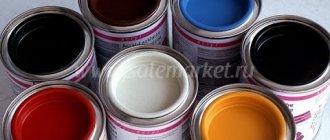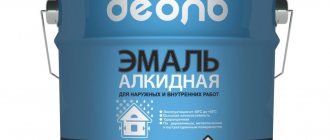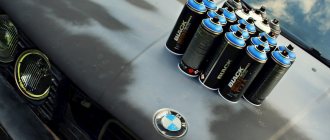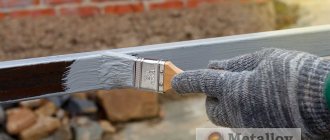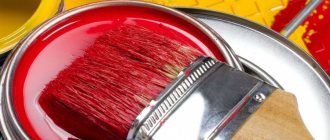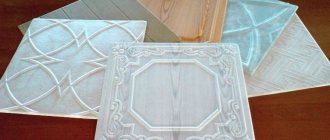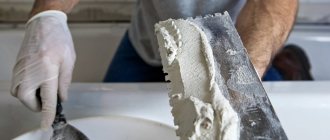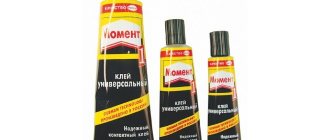How the operation is performed
- Stage 1 - the metal is first degreased, all dirt is removed from it, and treated with a special compound - phosphating, which increases adhesion and anti-corrosion properties;
- Stage 2 – a layer of paint is applied;
- Stage 3 – sintering of the coating and polymerization in a drying oven to form a film coating. For example, galvanized sheets with a polymer coating are used in facade and roofing work.
What is it?
Polymer coated steel coil is a cold rolled product. Depending on the type of base, it can be manufactured with or without galvanization. And the coating itself is one-sided or two-sided, depending on the base.
The polymer coating is produced using modern technology, which began its existence in the 1960s in England. The creation of such a coating was inspired by the eternal struggle of metal with corrosion. The aggressive external environment has always destroyed metal products, so various coatings have been tested for a long time, but they did not bring results. Either they were short-lived, difficult to apply, or expensive. Therefore, when modern technologies made it possible to create a new level of coating, the problem of corrosion disappeared forever.
Types of polymer paints
Polymer paints come in all colors and shades of the rainbow. But besides color, there are other classifications. For example, depending on the material that forms a smooth polymer film when painting, powders can be: epoxy, polyamide, polyester, polyester-epoxy and made on the basis of epoxy resins. The texture of polymer paint can be matte, glossy or textured, and there are also shades of “moire” and “metallic”. Dyes are available for exterior use and for interior finishing of metal products. Depending on the method of hardening, polymers are also different: there are those that “set” on the surface of the product by simple heating, and there are paints that harden only under the influence of ultraviolet radiation. If the coating is formed as a result of a chemical reaction, it is a thermoactive paint, and if it is formed by melting and heating in a polymerization chamber, then it is a thermoplastic coating.
Useful advice from experts
During staining, experts recommend adhering to the following recommendations:
When painting indoors, you must take care of high-quality ventilation or ventilation of the room. If it is not possible to organize ventilation, it is better to paint in the fresh air, since the paint may contain organic solvents that have a detrimental effect on the respiratory system and the entire human body; When painting, be sure to use personal protective equipment and safety equipment, such as thick protective clothing, goggles, rubber gloves and a respirator; In the store you need to purchase a sufficient amount of paint and all the necessary painting tools in advance; Before painting plastic, you can do without any preliminary preparation. But if you are going to paint metal, wood, concrete, plaster or other materials with plastic paint, you must carry out preparatory work; if you need to paint an uneven, broken surface, it is better to use an aerosol can
When using it, the spray nozzle should be at a distance of about 25 centimeters from the base to be painted; during painting, it is important to ensure that drips and sagging of the color mixture do not form, as they will spoil the appearance of the product; When applying multiple layers, you must wait for the previous coating to dry; this requires several hours before applying each subsequent layer.
So, plastic paints are very popular today. Liquid plastic effectively protects the surface, makes it visually attractive and durable. By following the dyeing recommendations, the dye will look beautiful and adhere firmly to the surface.
Advantages of polymer paints
Powder dyes have a number of advantages, due to which they can be used to process external and internal products made of different types of metal. The advantages of polymers include: - they are not afraid of mechanical damage: if the metal product is damaged or deformed, the color will simply take a new shape, remaining on the surface; — water and moisture resistance: the polymer coating does not lose its qualities, even if the product is in or under water for a long time; - resistance to UV rays: while other types of paints from sunlight can fade, collapse and lose all their properties, the polymer coating will remain just as durable and bright, nothing will happen to it even on the sunniest day; — can withstand fire and high temperatures: since polymer painting is carried out under strong thermal influence, the coating is not afraid of high temperatures in the future; You can even use powder paint to paint your grill and heating boiler. - not destroyed by chemicals.
Advantages and disadvantages of polymer coatings
Polymer coatings have both undeniable advantages and obvious disadvantages.
The advantages of polymers include:
- Aesthetics
- Impenetrability
- Relative heat resistance
- Electrical insulating properties
- Water resistance
- Environmental friendliness
- High adhesion
- Large selection of colors
However, along with the positive aspects, polymer coatings are not without disadvantages. The main one is the high cost of application, which consists of the cost of the polymer itself, auxiliary (priming) materials, special equipment, etc.
Another disadvantage of polymer coatings is the difficulty of removing them. They are quite resistant to chemicals, so the polymer layer cannot be removed with a solvent. The coating can only be removed using a special tool.
A significant disadvantage of polymers is the impossibility of applying them without special tools, which are available only to industrial enterprises or specialized specialists.
In addition, not all metals can be coated with polymer compositions, but only those that conduct electric current. This is due to a special method of applying polymers - by magnetic induction.
How to choose paint
Polymer paint is chosen depending on the type of work, product and place of its further use. To decorate elements in the room, choose environmentally friendly dyes without a strong odor. To paint surfaces that will be used outside, polymer paints must be resistant to moisture, sun, and dust. It is recommended to choose quick-drying types of powder dyes. In addition, metal products require paints that protect against corrosion. You also need to decide which surface suits you - glossy or matte. Glossy is easier to clean and more practical. But matte can mask minor defects on the metal surface. You definitely need to look at the expiration date - the closer it is to the manufacturing date, the better.
Additional recommendations
- The surface to be covered with an aerosol can must be clean of dirt and washed of grease. Ideally, you should use isopropyl alcohol, but regular dishwashing liquid will work fine.
- Decide on the type of plastic you are going to paint and, if necessary, select a suitable primer.
- You should not choose acetone-based paint for plastic, despite its attractive price. Acetone can corrode the plastic, and you will not get a beautiful, noble painted surface. Wait for warm, calm weather if working with paint indoors is not possible.
- When covering a large area, immediately stock up on the required number of cylinders from one batch. Cover the “extra” area with old sheets or newspapers (remember the wide spray spectrum). Shake the aerosol vigorously for a few seconds before starting coloring.
Scope of dyeing
Polymer dyes are used to process metal products for external and internal use. Polymer-based paints are used to cover pipelines, metal floors, elements of warehouses and ships. Paint is used not only as a decorative surface decoration, but also as a protective coating - for example, metal structures in swimming pools that are constantly in contact with water are painted. Polymer paint is used to paint cars, household appliances (bathtubs, boilers, boilers, refrigerators), and to process elements of bridges and viaducts, buildings and other metal structures.
Additional recommendations
- The surface to be covered with an aerosol can must be clean of dirt and washed of grease. Ideally, you should use isopropyl alcohol, but regular dishwashing liquid will work fine.
- Decide on the type of plastic you are going to paint and, if necessary, select a suitable primer.
- You should not choose acetone-based paint for plastic, despite its attractive price. Acetone can corrode the plastic, and you will not get a beautiful, noble painted surface. Wait for warm, calm weather if working with paint indoors is not possible.
- When covering a large area, immediately stock up on the required number of cylinders from one batch. Cover the “extra” area with old sheets or newspapers (remember the wide spray spectrum). Shake the aerosol vigorously for a few seconds before starting coloring.
Surface preparation
Before applying a polymer coating to the surface of a metal product, it must be prepared. This is necessary so that the paint lays evenly, does not create a lump, and hardens quickly. When preparing a product for polymer painting, the master must clean the surface, remove all defects, remove grease and oil stains. If the product is old, then first you need to get rid of the remnants of previous painting and remove corrosion products. Cleaning and preparation of metal products is carried out by mechanical, thermal and chemical methods. Purpose of preparation: the finished surface should become as compatible as possible with the polymer coating, without losing its properties and qualities and not reducing the protective quality of the paint.
How does polymerization take place?
The powder coating shop consists of several sections:
- Product preparation area: in order for the polymer coating to be applied correctly and evenly, the metal product is first thoroughly cleaned of dust, rust, and dirt. It is advisable to use effective sandblasting and phosphating. A mandatory step is degreasing the metal surface.
- Spray booths: The spray booth is where the actual painting is done. The chamber is thermal, it can heat up to a temperature of 200 degrees and warms up evenly. The powder begins to melt, due to which an even and smooth coating is formed over the entire surface of the metal, and its pores are filled.
- Polymerization of the product is carried out in a cooling chamber: here the temperature gradually drops and the polymer film becomes harder. After 24 hours, the polymer coating is ready for use.
